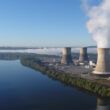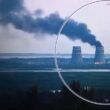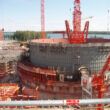Small radiation doses: The unknown might hurt us
By David J. Brenner, June 30, 2011
Radiation can’t seem to stay out of the news. We worry about people over-exposed to CT scans, and people getting medically unnecessary x-rays. We worry about dirty bombs. Some even worry about whole-body airport scanners. Now, sadly, it’s the Japanese nuclear accident: a few brave folks inside the reactor getting significant radiation exposures; and many worried people near the Fukushima Daiichi nuclear power plant, in the rest of Japan, and worldwide getting exceedingly small radiation doses. Just how worried should we be? What do we really know?
We know that the primary long-term concern after low-dose radiation exposure is cancer — maybe not the only concern, but certainly the primary concern. Higher doses mean higher individual cancer risks; lower doses mean lower individual cancer risks; and very low doses mean very low individual cancer risks.
We know that the radiation doses to everyone outside the Fukushima Daiichi plant are small, and thus the radiation-related cancer risks to any individual as a result of the Fukushima disaster are small — small near the evacuation zone in Fukushima, very small in the rest of Japan, and miniscule in other countries. So the radiation risks for any individual outside the evacuation zone are not big enough to change our plans, not big enough to stop drinking the water, or eating the food.
We know that the first phase of the situation in Japan is slowly ending. Major airborne releases of radioactivity are probably in the past (but there are no guarantees), and we know that the amount of radioactivity in the air has been steadily falling since the end of March. In fact we were extraordinarily lucky that the winds near the Fukushima Daiichi plant blew fairly consistently offshore in the crucial periods in March and April, taking most of the airborne releases over the Pacific Ocean, and not toward inhabited areas of Japan. The result is that the radiation doses to people in and around Fukushima have been low, and the radiation doses to people further away, such as Tokyo and beyond, have been extremely low. The wind was really our friend.
But the second phase of the accident scenario, a much longer-lived and potentially more significant chapter, is now beginning. The two main radioactive isotopes that we worry most about are iodine and cesium. Radioactive iodine has a half-life of only eight days, so in a couple of months almost all of the released radioactive iodine should be gone. Radioactive cesium is another story. Its half-life of 30 years means that most of the cesium released from the Fukushima power plants will be with us for generations. Most of this radioactive cesium will end up in the Pacific Ocean and will be enormously diluted in the 700 quintillion liters of water there. But some of the cesium will end up on dry land, in our food, and in our water — and there it will stay, at very low levels, literally for generations.
Should this worry us? We know that the extra individual cancer risks from this long-term exposure will be very small indeed. Most of us have about a 40 percent chance of getting cancer at some point in our lives, and the radiation dose from the extra radioactive cesium in the food supply will not significantly increase our individual cancer risks.
But there’s another way we can and should think about the risk: not from the perspective of individuals, but from the perspective of the entire population. A tiny extra risk to a few people is one thing. But here we have a potential tiny extra risk to millions or even billions of people. Think of buying a lottery ticket — just like the millions of other people who buy a ticket, your chances of winning are miniscule. Yet among these millions of lottery players, a few people will certainly win; we just can’t predict who they will be. Likewise, will there be some extra cancers among the very large numbers of people exposed to extremely small radiation risks? It’s likely, but we really don’t know for sure.
Does this really matter? Surely it does. All of these uncertainties make it hard to frame a debate about the future of nuclear power in Western countries. We are clearly at a fork in the road regarding nuclear power, where we will either have to replace many of our aging reactors, or move away from nuclear power entirely. To make rational decisions about these momentous questions — not to mention what we should do about the rapid increase in medical imaging such as CT scans, or even the new airport X-ray scanners — we need to understand the risks of low doses of radiation with a great deal more certainty. Otherwise the debates will be framed around the extreme positions of “radiation is universally dangerous” and “low doses of radiation pose no risk.” Neither is true.
Topics: Nuclear Energy
Share: [addthis tool="addthis_inline_share_toolbox"]














